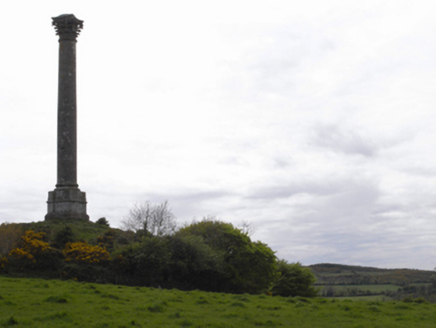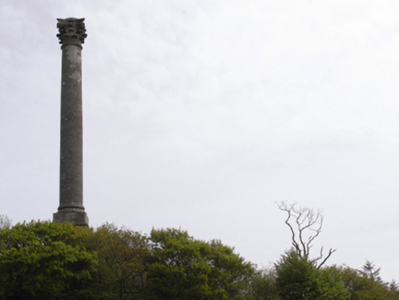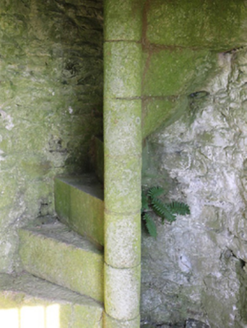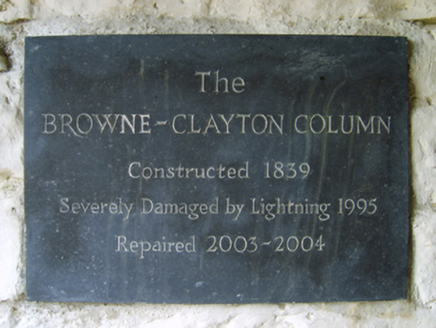Survey Data
Reg No
15703510
Rating
National
Categories of Special Interest
Architectural, Artistic, Historical, Social
Original Use
Monument
In Use As
Monument
Date
1835 - 1845
Coordinates
281473, 123764
Date Recorded
11/09/2007
Date Updated
--/--/--
Description
Freestanding "Triumphal Column", built 1839-41, on a circular plan on pedestal on a square plan. Damaged, 1994. Restored, 2002-3. Lichen-spotted granite ashlar walls (pedestal) on cut-granite "Cyma Recta" or "Cyma Reversa" cushion course on cut-granite plinth with lichen-spotted cut-granite "Cavetto" stringcourse; part repointed lichen-spotted granite ashlar walls (shaft) on moulded "Apophyge" on lichen-spotted granite ashlar base with repointed carved cut-granite capital having lead-covered coping. Square-headed door opening (pedestal) with lichen-spotted cut-granite lintel framing replacement mild steel gate. Limewashed interior retaining cantilevered cut-granite helical staircase. Set on gorse-covered outcrop.
Appraisal
A "Triumphal Column" erected to a design (1839) by Thomas Alfred Cobden (1794-1842) of Carlow and London (Civil Engineer and Architect's Journal 1840, 181) representing an important component of the nineteenth-century built heritage of County Wexford with the architectural value of the composition, one commissioned by Lieutenant-General Robert Browne-Clayton (1771-1845) to commemorate Sir Ralph Abercromby (1734-1801) 'and the triumph of the British Army in Egypt' (Lacy 1863, 508), confirmed by such attributes as the construction in a silver-grey Mount Leinster granite demonstrating good quality workmanship: meanwhile, aspects of the composition, in particular gleaming insertions, clearly illustrate the partial reconstruction of the "Triumphal Column" by the Wexford Monument Trust (established 2001) following a devastating lightning strike (1994). NOTE: George Henry Bassett (1844-1908) describes an earlier lightning strike when 'the keeper of the monument, William Doyle, narrowly escaped death. While standing in the door-way, at the foot of the stairs, he heard the cries of a favourite dog, and started down the hill to discover the cause. He had not gone far when the shaft was struck by lightning at the top and the iron door at the bottom was wrenched from its hinges and thrown down the decline' (Bassett 1885, 209-11).







